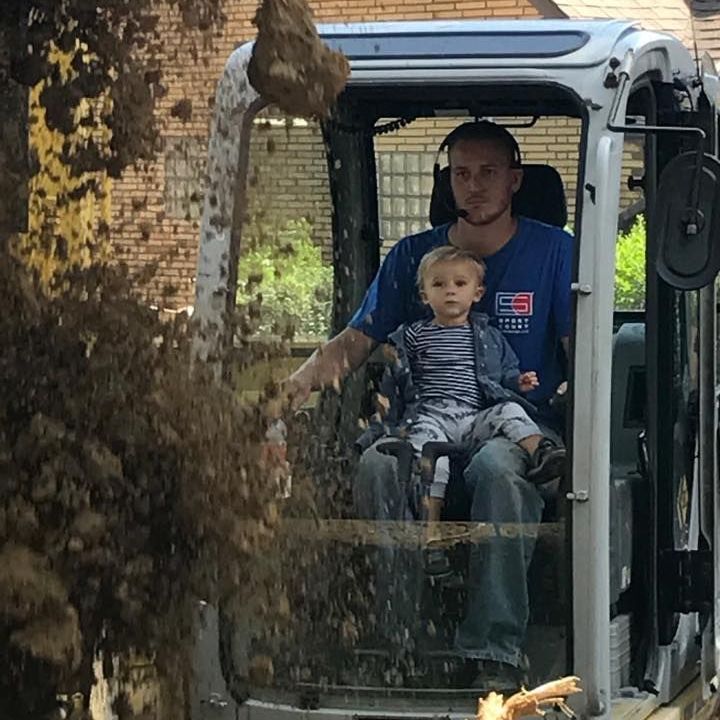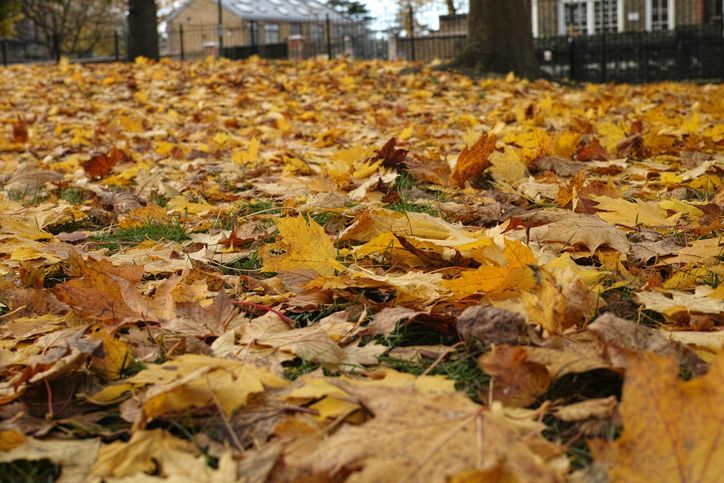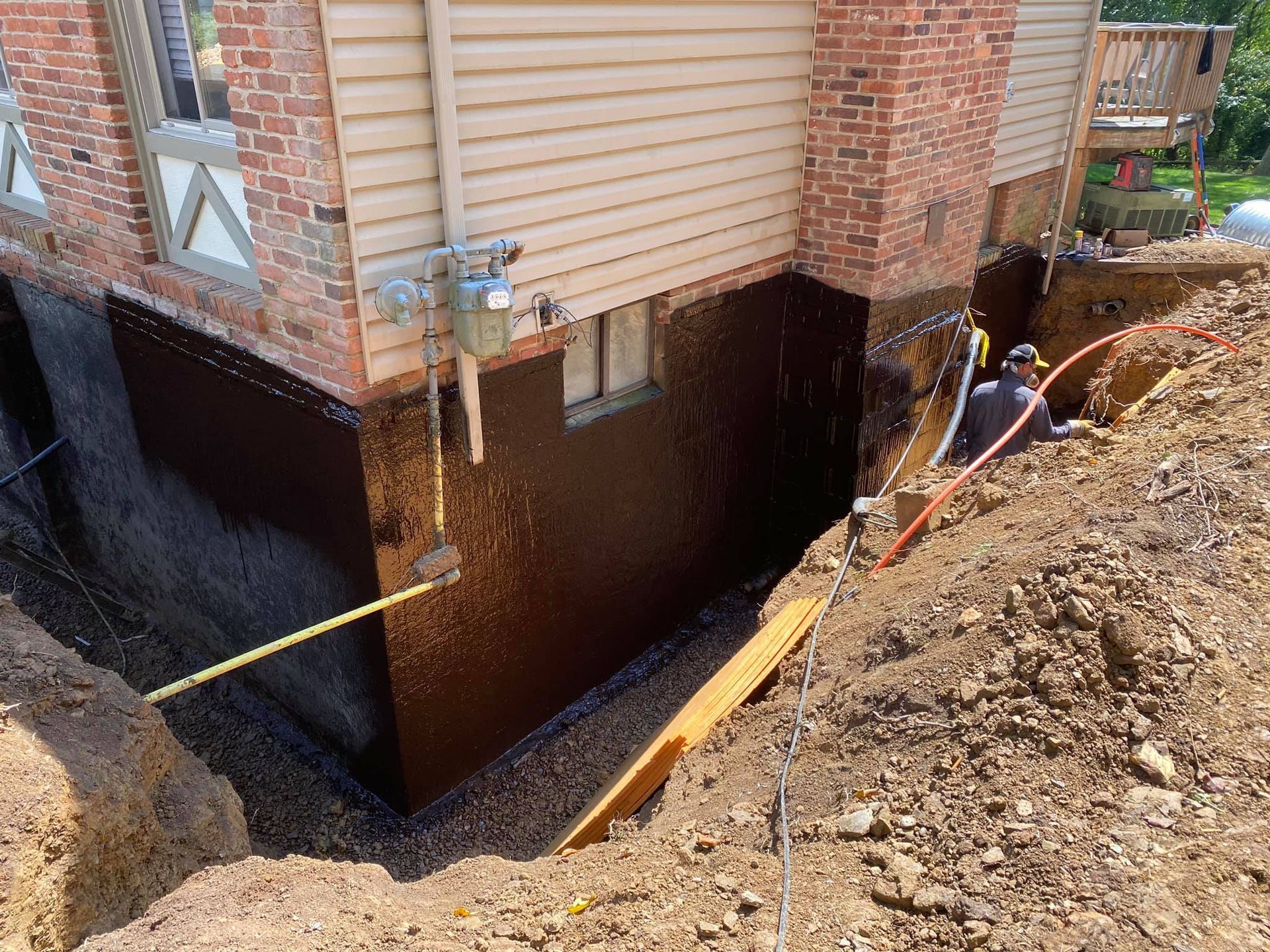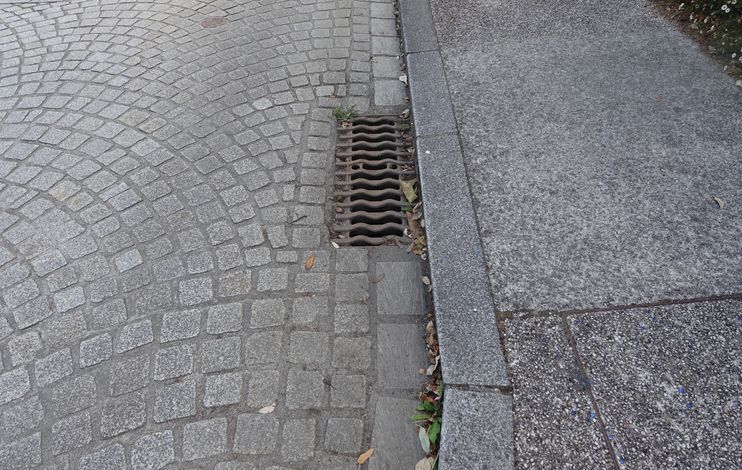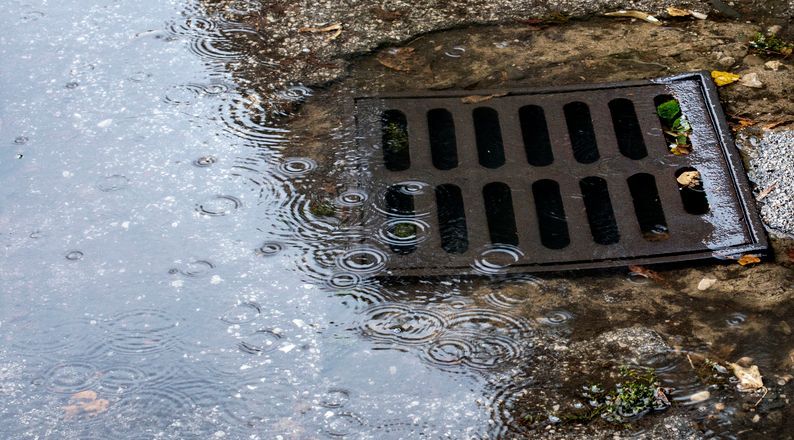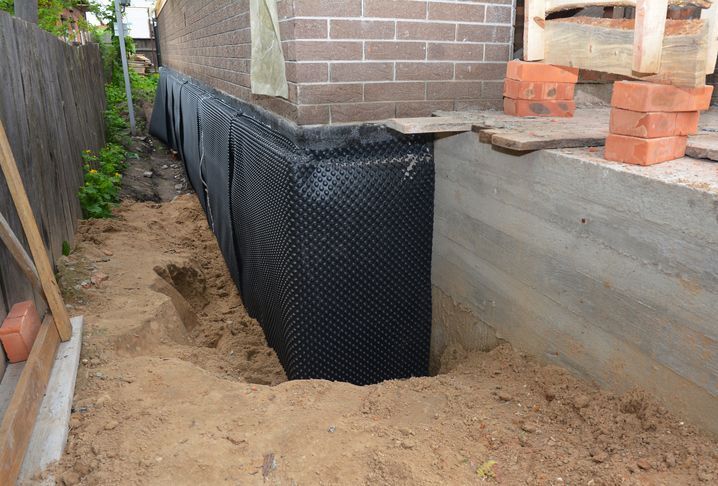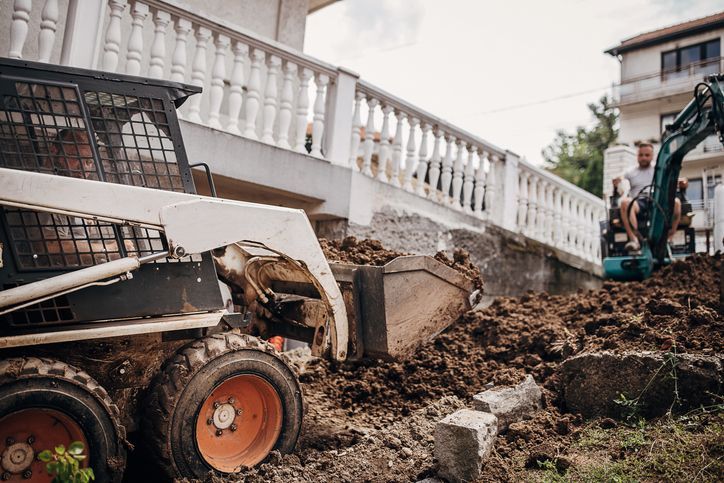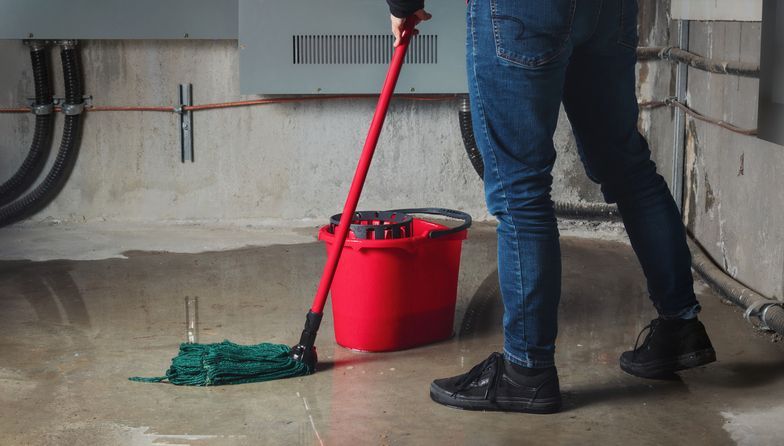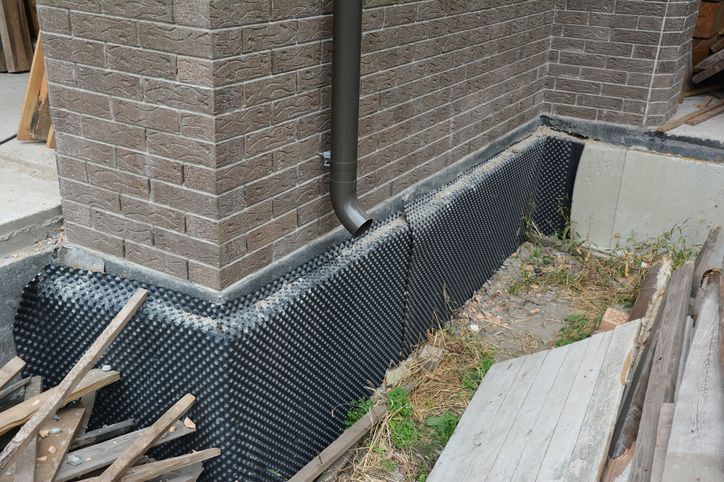The Role of Retention Ponds in Flood Prevention and Stormwater Management
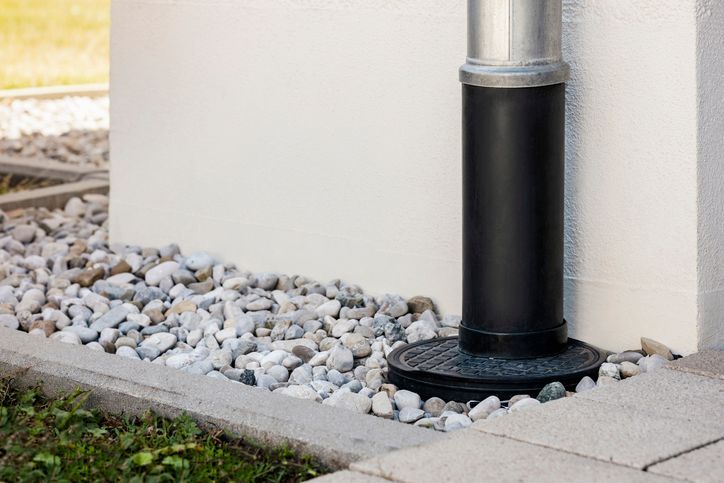
Why Stormwater Management Matters in Pittsburgh
Stormwater management plays an essential role in preserving the integrity of homes, infrastructure, and local ecosystems across Pittsburgh and the surrounding region. Western Pennsylvania's hilly terrain, compact neighborhoods, and above-average rainfall make it particularly prone to surface water issues, including flash flooding, basement water intrusion, and soil erosion.
Over time, development in Pittsburgh has increased the number of impervious surfaces—such as asphalt driveways, rooftops, and paved roads—which limit the natural infiltration of rainwater. Instead of soaking into the ground, this water travels rapidly across hardscapes, accumulating pollutants along the way. With much of the city's soil composed of clay, water absorption is already limited, compounding the risk of runoff overwhelming sewer systems and damaging private and public property.
The National Oceanic and Atmospheric Administration (NOAA) reports a trend toward more intense rainfall events in the region. These storms drop large amounts of water over short periods, which urban infrastructure often cannot manage efficiently. As a result, both homeowners and developers are seeking sustainable, proven solutions for stormwater control.
One such solution is the retention pond. This engineered feature not only reduces the volume and speed of runoff but also contributes to water quality improvement and long-term environmental stability. As a component of a broader drainage strategy, retention ponds can be instrumental in safeguarding communities from flood-related disruptions.
What Is a Retention Pond?
A retention pond, also called a wet pond, is a man-made basin designed to hold stormwater runoff permanently. Unlike detention ponds, which temporarily collect water and release it quickly after a storm, retention ponds maintain a consistent pool of water year-round. During rainfall events, they capture excess water and release it at a controlled rate, helping to minimize erosion, flooding, and strain on drainage systems.
How Retention Ponds Work
When rainwater flows over roofs, driveways, and sidewalks, it picks up contaminants such as oil, sediment, lawn fertilizers, and debris. If left unmanaged, this polluted runoff may flow directly into natural water bodies, degrading water quality and harming aquatic life. Retention ponds are constructed to receive this runoff and provide a settling area where heavier particles sink to the bottom.
Plants growing in and around the pond help to absorb nutrients and filter pollutants. Microbial activity in the water and sediment further breaks down contaminants. The result is cleaner water that can either infiltrate into the groundwater or be released downstream through a controlled outlet, such as a culvert or spillway.
Key Differences from Detention Ponds
Detention ponds, or dry ponds, are designed for short-term water storage. They typically fill up during a storm and drain quickly afterward, remaining dry the rest of the time. Retention ponds, on the other hand, hold water at all times and offer ongoing filtration and habitat benefits.
This distinction means that retention ponds are especially useful in locations with frequent or intense storms. They provide both immediate and long-term water management and support plant and animal life, adding ecological and aesthetic value to the site.
Types of Retention Ponds
Wet Ponds: The most common form of retention pond, featuring a consistent water level and room to accommodate storm surges.
Bio-Retention Areas: Also known as rain gardens or vegetated basins, these areas use engineered soils and plantings to filter water through shallow, landscaped depressions.
Hybrid Systems: In areas where space is limited, retention ponds can be combined with underground detention tanks, rainwater harvesting systems, or filtration units to improve performance without requiring large footprints.
The Science Behind Retention Ponds
Slowing Runoff and Reducing Erosion
In natural landscapes, rainfall is gradually absorbed into the ground or taken up by vegetation. In developed areas, however, rain flows across hard surfaces with increased speed and volume. This rapid movement leads to soil displacement, damages infrastructure, and causes downstream flooding.
Retention ponds function by slowing the movement of stormwater. As water enters the pond, it loses velocity, which reduces its capacity to erode soil or wash away landscaping. This process is particularly valuable in sloped areas, where gravity accelerates runoff and amplifies erosion risks.
Water Quality Benefits
Stormwater runoff often contains a variety of contaminants that present risks to public health and the environment. Retention ponds serve as passive treatment systems that remove pollutants through physical, biological, and chemical processes:
- Sedimentation: Suspended particles settle at the bottom of the pond.
- Nutrient Uptake: Aquatic plants absorb excess nitrogen and phosphorus.
- Biological Breakdown: Bacteria and microorganisms in the sediment degrade organic materials and pollutants.
Over time, these processes significantly improve the quality of water leaving the site, helping protect local streams, rivers, and groundwater supplies.
Hydrological Impact
Beyond flood prevention and filtration, retention ponds support the long-term balance of the hydrologic cycle. By retaining water, they give it time to infiltrate the ground, replenishing aquifers that feed wells and springs. Evaporation from the water's surface and transpiration from vegetation also return moisture to the atmosphere, contributing to local humidity and temperature regulation.
Retention Ponds as a Tool for Flood Prevention
The topography and aging infrastructure in many parts of Pittsburgh make flooding a recurring concern. Storm sewers may back up during storms, and low-lying neighborhoods are especially susceptible to water damage.
Retention ponds offer a strategic solution to reduce flood risks by intercepting water at its source. By capturing runoff before it enters sewers or natural waterways, they decrease the volume and speed of flow, reducing the chance of system overloads and downstream flooding.
Flash Flood Mitigation
In areas where rainfall intensity exceeds drainage capacity, flash floods can occur with little warning. These rapid surges of water can inundate streets, basements, and public spaces.
Retention ponds help mitigate flash floods by providing buffer storage. During a heavy downpour, the pond fills with runoff and gradually releases it through controlled outlets. This regulated flow ensures that stormwater systems downstream are not overwhelmed.
Terrain-Specific Benefits in Pittsburgh
Certain Pittsburgh neighborhoods benefit significantly from retention ponds due to their geographic and infrastructural characteristics:
- South Hills: This area, characterized by steep terrain and dense development, experiences fast-moving runoff and erosion. Retention ponds can reduce water speed and minimize slope degradation.
- North Side: Older sewer lines and narrow alleyways can cause water to back up quickly. Retention ponds reduce flow into these already-constrained systems.
- Fox Chapel and Mt. Lebanon: Large residential lots generate high runoff volumes. Retention ponds prevent water from pooling in lawns or washing out driveways.
Residential Applications: Do You Need One on Your Property?
Although often associated with commercial or municipal projects, retention ponds can also serve individual homeowners, particularly on larger or sloped properties. A well-placed pond can prevent recurring water problems and reduce reliance on pumps or temporary fixes.
When to Consider a Retention Pond
- Homeowners may benefit from a retention pond if they observe the following conditions:
- Frequent water pooling in the yard
- Basement flooding after heavy rain
- Soil erosion around walkways or retaining walls
- Overloaded existing drainage systems
Some residential developments may even require shared or individual retention systems as part of zoning or stormwater compliance.
Small-Scale Alternatives
Where space is limited, homeowners can explore smaller, more discreet alternatives:
- Rain Gardens: Shallow depressions planted with native vegetation that absorb and filter runoff.
- Dry Creek Beds: Engineered stream-like features that direct water flow to safer areas.
- Underground Storage Tanks: Buried containers that hold runoff for slow release.
These features can be tailored to complement landscaping while providing measurable drainage benefits.
Long-Term Cost Savings for Homeowners
Installing a retention pond involves an upfront cost, but it can offer measurable long-term savings by reducing flood-related issues and helping maintain the condition of your landscape.
Minimizing the Risk of Flood Damage
Retention ponds help manage excess stormwater by temporarily storing runoff during heavy rainfall and releasing it slowly into the ground or local drainage systems. For homeowners, this can reduce the likelihood of water pooling around the home's foundation or entering basements, which may lead to water damage over time.
Even moderate flooding can result in repair expenses related to flooring, drywall, and mold remediation. By helping to control runoff and minimize the risk of these issues, a retention pond can lower the frequency and severity of maintenance needs associated with stormwater.
Supporting Landscape Stability
Retention ponds also help manage how water flows through a property, which can protect landscaped areas from erosion and runoff-related stress. Without a buffer system in place, repeated exposure to heavy rain can gradually wear away soil, damage plant beds, and contribute to uneven settling in the yard.
A retention pond can contribute to a more stable and resilient landscape by slowing the movement of water across the property. This may reduce the need for future landscaping repairs or replacements, particularly in areas that experience frequent or seasonal rainfall.
Potential for Lower Ongoing Maintenance Costs
While retention ponds require occasional maintenance, they may help offset other recurring expenses. Homes with better water management infrastructure may experience fewer drainage-related repairs and less erosion over time. In some cases, municipalities may offer incentives or credits for properties that incorporate approved stormwater management features, though availability varies by location.
Commercial & Municipal Uses of Retention Ponds
Code Requirements and Environmental Regulations
Specific stormwater management regulations for commercial and municipal projects often cover retention ponds. These rules reduce runoff, protect nearby waterways, and minimize the impact of the development on the surrounding environment.
Local municipalities and the Pennsylvania Department of Environmental Protection (PA DEP) typically require a stormwater management plan for new developments, and retention ponds are a commonly approved solution.
Meeting these requirements ensures regulatory compliance and can also help projects avoid penalties or construction delays. Working with knowledgeable contractors familiar with local codes is essential for keeping projects on track.
Common Applications: Parking Lots, Industrial Sites, and Subdivisions
Retention ponds are widely used in commercial and municipal settings to manage runoff from large impervious surfaces like parking lots, roads, and building roofs. They're frequently integrated into:
- Office parks and industrial campuses
- Retail centers and school campuses
- Residential subdivisions and HOA communities
In these environments, retention ponds are designed to manage high volumes of runoff while maintaining a safe and low-maintenance footprint.
Collaboration with Engineers and Contractors
At Pittsburgh Drain Guys, we frequently coordinate with civil engineers, project managers, and site contractors to install retention ponds that align with each site's grading, drainage goals, and regulatory needs. Our team assists with excavation, proper slope creation, and installation of inlet/outlet structures to ensure long-term performance.
Retention Pond Design and Construction
Permitting and Planning in Pennsylvania
Retention pond construction typically begins with a review of local stormwater ordinances and permit requirements. In Pennsylvania, this process may involve coordination with county conservation districts or municipal engineering departments. Securing the necessary approvals is an essential first step that ensures the project aligns with environmental and safety standards.
Choosing the Right Location and Size
Proper location and sizing are key to retention pond performance. A site assessment considers natural drainage patterns, available space, and soil composition. The pond must be large enough to hold expected runoff but positioned to avoid conflicts with building foundations, underground utilities, or septic systems.
Excavation, Grading, and Lining Materials
Construction begins with excavation and grading to create a stable basin. Slopes are shaped to support vegetation and prevent erosion. Depending on the site conditions, ponds may be lined with clay, geotextile fabric, or a synthetic liner to help retain water and avoid seepage. Inlet and outlet structures are installed to manage water flow safely.
Ongoing Maintenance Considerations
Long-term maintenance includes sediment removal, vegetation management, and periodic inspections to ensure proper drainage. Over time, sediment can accumulate and reduce pond capacity. Routine upkeep helps extend the pond's effectiveness and avoids costly repairs.
Retention Ponds and Sustainability
A Component of Green Infrastructure
Retention ponds play a meaningful role in sustainable land development by capturing and slowly releasing stormwater runoff. This natural, passive process helps mimic the site's original hydrology and reduces the volume and speed of water entering storm sewer systems. By allowing suspended solids and pollutants to settle before water is discharged, retention ponds also contribute to improved downstream water quality.
This is especially valuable in urban and suburban areas where impervious surfaces like pavement and rooftops limit the ground's ability to absorb water naturally.
Integration with Rain Gardens, Swales, and Native Plants
When designed thoughtfully, retention ponds can integrate with other green infrastructure elements to create a multifunctional landscape. For example, rain gardens planted with deep-rooted native vegetation can be used near pond edges to absorb overflow and filter nutrients from runoff. Similarly, bioswales—shallow, vegetated channels—can guide water into the pond while removing sediment and pollutants along the way.
Incorporating native plants along the pond's perimeter not only enhances filtration but also supports pollinators, birds, and other beneficial wildlife. This can turn a functional drainage feature into a small ecosystem that contributes to biodiversity and visual appeal. These plantings also reduce the need for mowing and chemical maintenance, which aligns with long-term sustainability goals.
Supporting LEED and Eco-Conscious Development
Retention ponds can contribute toward earning points in sustainable building certification systems like LEED (Leadership in Energy and Environmental Design), particularly under categories related to sustainable site development, stormwater design, and water-efficient landscaping.
In eco-conscious developments, incorporating retention ponds signals a proactive approach to environmental responsibility by reducing erosion, protecting water quality, and managing site runoff without over-reliance on mechanical systems.
When used in conjunction with permeable paving, green roofs, or cisterns, retention ponds become an integral part of a larger water management strategy—helping project teams meet both regulatory and voluntary environmental performance targets.
Complementary Drainage Solutions
When Retention Ponds Work Best as Part of a System
While retention ponds are effective on their own, they're often more efficient when paired with other drainage solutions. Combining strategies ensures that water is captured, redirected, and dispersed in a controlled and site-appropriate way.
Common pairings include:
- French Drains – For intercepting surface or subsurface water and directing it to the retention pond.
- Dry Wells – To allow water to infiltrate into the ground after passing through the pond system.
- Sump Pumps – Useful for low-lying areas or basements that experience water intrusion.
- Channel Drains – Ideal for hard surfaces such as driveways, directing water toward the retention basin.
At Pittsburgh Drain Guys, we focus on full-system solutions. Our team assesses the property as a whole to design and implement drainage strategies that work together for long-term reliability.
Why Choose Pittsburgh Drain Guys
Local Expertise in Western Pennsylvania Drainage
With decades of hands-on experience serving the greater Pittsburgh region, Pittsburgh Drain Guys brings in-depth knowledge of the area's unique geography, climate, and drainage challenges. From the clay-heavy soils common in Allegheny County to the sloped terrain found throughout the South Hills and surrounding suburbs, our team understands how water behaves in local landscapes—and how to manage it effectively.
We don't apply generic solutions. Instead, we evaluate each site with a local lens, accounting for seasonal weather patterns, snowmelt cycles, and site-specific variables like soil permeability and elevation. This allows us to recommend retention pond systems that perform well in real-world Western Pennsylvania conditions, not just on paper.
Fully Customized Drainage Systems
Our work is rooted in personalized service. At Pittsburgh Drain Guys, no two drainage systems are alike because no two properties are the same. We take the time to understand each client's goals, budget, and environmental constraints before designing a solution.
Whether you're a homeowner with chronic yard flooding or a commercial property manager needing stormwater compliance for a large site, we design retention ponds and associated drainage systems that fit your specific layout, existing infrastructure, and local permitting requirements. We also provide integrated drainage services—including French drains, channel drains, dry wells, and downspout tie-ins—that can work in tandem with your pond to maximize its performance.
Focused on Long-Term Protection and Function
Our goal is to deliver drainage systems that are durable, efficient, and require minimal intervention over time. We select materials, liners, and pond structures designed for longevity and ease of maintenance. Our team also educates property owners on best practices for long-term care, such as sediment removal schedules, vegetation management, and inspection timelines.
We know drainage isn't just about convenience—it's about safeguarding your home, business, or landscape investment from water damage. That's why every project we take on is approached with care, clear communication, and a focus on preventing future issues, not just solving today's.
What Sets Us Apart
Licensed and Insured Professionals: You're working with a fully insured team with extensive training in stormwater management and excavation best practices.
- Customer-First Approach: We provide honest assessments, no-pressure estimates, and clear communication at every step of the project.
- One-Stop Shop: From site evaluations and permitting support to excavation and final grading, we handle the full scope of your drainage solution in-house—no outsourcing or guesswork.
- Residential and Commercial Capabilities: We serve homeowners, HOAs, builders, and commercial developers throughout Pittsburgh and beyond.
How to Get Started
At Pittsburgh Drain Guys, we aim to make the process of designing and installing a retention pond as straightforward and transparent as possible. Whether you're experiencing ongoing drainage issues or planning ahead for new construction, our step-by-step approach is designed to guide you from initial assessment through final implementation.
What to Expect from an Initial Consultation
The first step is a phone call or online inquiry, where we learn more about your property and your specific drainage concerns. We'll ask a few key questions, such as:
- What kind of flooding or runoff issues are you experiencing?
- Is this a residential, commercial, or new development property?
- Have you noticed pooling water, erosion, or foundation damage?
- Do you have any existing drainage infrastructure in place?
Once we gather this background information, we'll schedule a site visit at your convenience. There's no obligation—just an honest conversation about your options and how we can help.
Site Evaluation Process
A comprehensive on-site evaluation is critical to determining whether a retention pond is appropriate and how it should be designed. During the visit, our drainage specialist will:
- Assess the slope and topography of your land to understand how water flows during storms.
- Evaluate soil composition and drainage rates to determine if the soil can support a pond or if lining materials will be needed.
- Identify existing structures, such as downspouts, storm drains, utility lines, or septic systems, that may influence design or placement.
- Observe runoff patterns and problem areas, such as soggy lawns, basement leaks, or erosion damage.
- Measure available space to determine pond capacity and ensure compliance with local zoning or stormwater requirements.
- We'll take detailed notes and photos and, if necessary, coordinate with engineers or local agencies to align the design with municipal standards.
Timeline and Cost Considerations
Every property is different, and so is every retention pond. After the site evaluation, we'll provide a written estimate that outlines the scope of our work, including excavation, materials, inlet/outlet structures, and any additional drainage components recommended.
We'll also provide a clear timeline that accounts for:
- Permitting (if required by your municipality or county)
- Excavation and grading schedules
- Weather or seasonal considerations
- Post-construction inspections or follow-up maintenance tips
Residential retention pond projects may take anywhere from a few days to a few weeks, while commercial or more complex systems may require longer planning and coordination. We're upfront about costs and timelines so that you can make the best decision without surprises.
Ready to Take the Next Step?
Whether you're managing a residential drainage issue or planning a more extensive commercial site, our team is here to help.
Contact Pittsburgh Drain Guys today to schedule your site evaluation or request a custom drainage solution tailored to your needs
